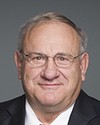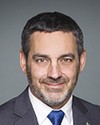Sure. Obviously, airplanes need to take off from an airport, and they need to come back to an airport. Most of the exercises we perform during in-flight training are actually done in specific areas that are well defined. They're actually on our map charts, and we do perform those manoeuvres to train our pilots in those areas.
There's actually one here in Ottawa, between Constance Lake and Constance Bay, on the other side of the river there. We use those areas. I think it does cost and it does take time to actually transition to those zones from the airports. Sometimes the airports are not in those areas, so we do fly to those areas.
I think what we are hearing here is that at the airport there are issues with flight training, and although there are solutions available for us to address them, in my brief you will see that we need the support of the federal government, not necessarily in terms of money but in terms of capabilities for us to actually insert technological changes in the way we train. We have tools today that are not being used because we don't have the authorization of Transport Canada, for example, to do this.
Artificial intelligence, virtual reality, augmented reality, electric aircraft.... There's a whole list of technology that we could actually use, not to remove the noise problems being discussed here, but at least to attack the problem and come up with, as you said, a more manageable situation.
Taking off from and landing at an airport are going to be required. There's no way we can train a pilot without him knowing how to land and take off. But there are ways in which we can actually do it that reduce the noise. We just need a little more support from Transport Canada and from the government to actually get into a position where we can adapt those technologies into a business that is cash flow-sensitive and very profit-dependent, and therefore—






